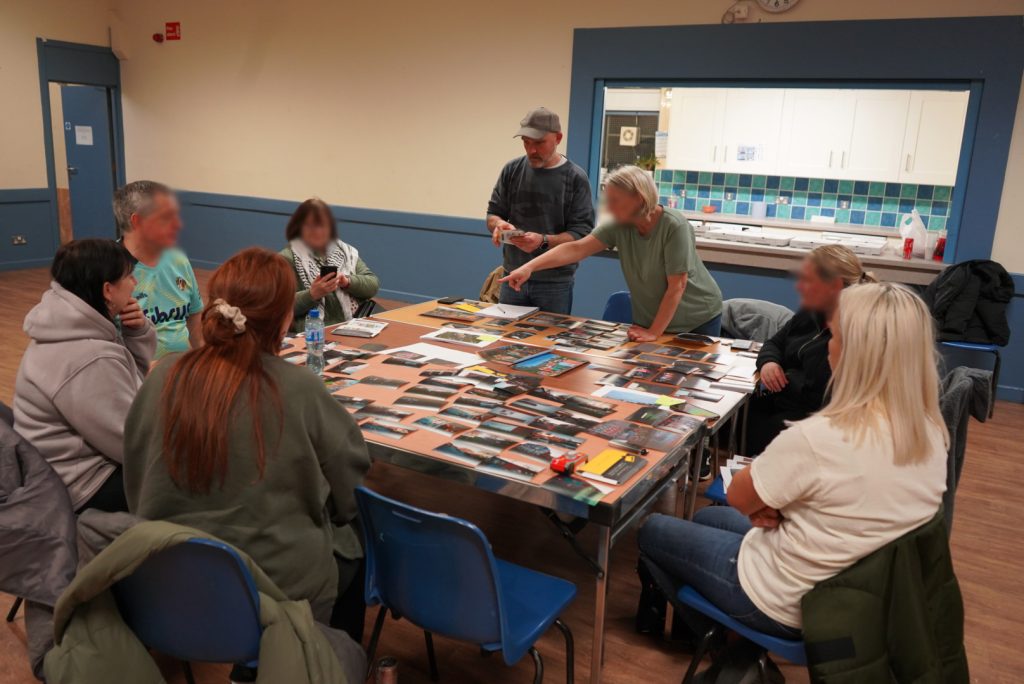
Áine Brady, our Community Innovation Practitioner based at Queens University Belfast, shares the impact taking a creative approach has had in helping her community open up about their lived experiences, and start envisioning their collective future.
The path to healing and recovery is seldom a straight one; dead ends, roundabouts and roads that zig zag are all parts of the journey a person can find themselves on when dealing with trauma and the issues it creates in their lives. My research focuses on the role of creative methodologies and their usefulness in breaking the cycles of silence that perpetuate trauma and its consequences in communities, namely substance use.
The Market Community
The site of my research is the Market community, an historic working-class neighborhood in the heart of Belfast’s inner city; the community is a strong network of families and neighbours bound tightly by a 200-year-old history, as well as their shared experiences of life together throughout the Conflict and its aftermath. Over the last three decades the legacy of the Conflict, along with deprivation and urban planning issues, has seen an explosion of substance use and mental health issues in the neighborhood. Intergenerational trauma, a significant factor in substance use, has further contributed to this problem with silence perpetuating its impact. My project aims to break these cycles of silence, exploring the potential of cultural intervention to address substance use issues.

I was born and raised in the Market, it’s still the place I call home and it’s where I raise my 3-year-old daughter. I’m a part of this community, I share in all its joys and strengths, and I also feel every part of its challenges. This puts me in a unique position as a researcher because I navigate many of the paths the participants in my project do as we raise our children together, live side by side and journey through life on these same streets. This connection has proved particularly important in making people feel comfortable enough to open up about their most traumatic experiences in their lives and the consequences of them. It has also allowed for a much deeper process of co-designed research, with the group taking ownership of research themselves and seeing it as something they own too.
Photovoice
The first phase of the project involves an adult group and a young person’s group embarking on the curation of a photographic exhibition about life in the Market. This includes the use of Photovoice to allow our participants to reflect and explore the reasons, emotions, and experiences behind the pictures they have selected. We’ve been meeting twice a week in the Market Community Centre and have used creative methods to explore a number of themes identified by participants including loss, resilience, pride, challenges and home. Central to this approach has been the partnership with the local community organisation the Market Development Association (MDA) and Matt Faris, the artist-facilitator on the project. The MDA has helped to recruit participants, provided us with a space to work in and its community workers help me to organise and run the sessions. Matt brings a wealth of creative methods to the project and importantly, he understands the power of the arts as a tool in community development and building agency. Photography may be the output of the process, but over the last few months we have harnessed a range of creative methodologies including drama, poetry, storytelling, singing and map making to generate new understanding and representations. Participants often attend a session after spending all day at work, or college or at home with their kids and get to take part in creative activities that allow them to switch off, open up and share a bit about their lives. There have been poignant moments, when people have addressed their trauma, when they talk about their hopes for the future and the things we can do to build ourselves as a community.

The act of community building is central to the impact of this research. As one participant told me:
‘When you asked me to do this [project] I thought it would be weird because it was about art and I didn’t really know what we’d be doing every week. But now I love it, it just lets you dig down deeper to the stuff in your life and think about things in a new way. And its brilliant to do it with other people from round here.’
This is why co-creation and creative methodologies warrant further exploration, experimentation and application both here in Belfast and across wider devolved spaces in the UK.
Áine Brady is a Community Innovation Practitioner from the 2023-2024 cohort. You can find out more about her work on our website or read about the CIP Pilot.
Brought to you by


